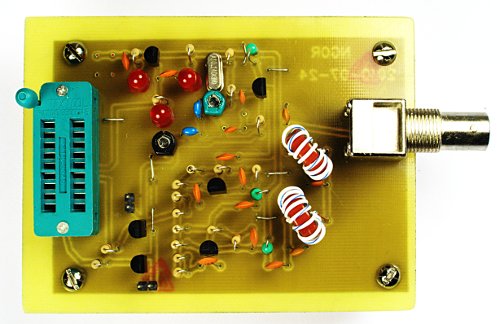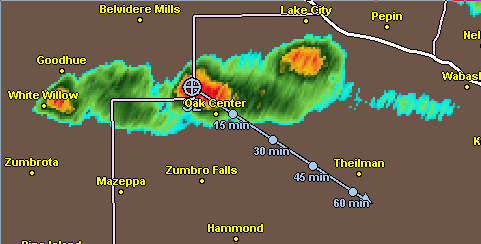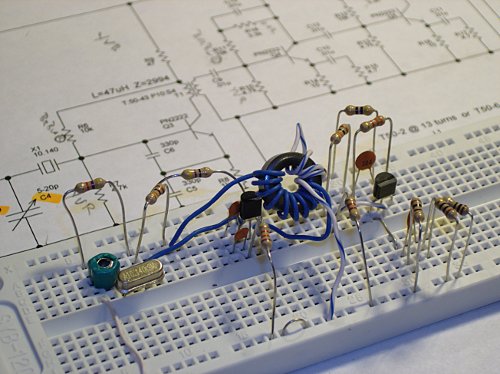Here is another QRSS prototype that I am working on. This one will support standard single frequency and dual frequency CW. (I will add FSK in a future version of the board.) The design will use a PIC 16F628A for the keying. It is likely that I will need an additional amplifier stage but I want to assemble and measure this prior to adding too many more features. (It is easier to debug & test this if I control how much change I introduce in each version of the prototype.)
Click on the image to see a larger version of the schematic.

I then exported the TinyCad schematic into FreePCB to layout the board (below).

I then exported the board layout into the appropriate Gerber and PNG formats.

I then printed the artwork on some blue print and peel paper with my laser printer and then taped it to the 3x4 inch piece of single sided circuit board.

I then ran the combo through my modified laminator to transfer the laser toner to the circuit board. Four passes through the laminator is enough to bond the toner.

I then drop the combo into a container of water. After about 60 seconds the blue print and peel is ready to remove from the board. Once the board is dry I then applied some green foil to the PCB to seal the toner.
(This is the first time that I have tried the the green foil. It was a mixed success... it actually reduced the quality of the PCB because the traces were not as clean as the raw toner was. --Live and learn.)
Since it is summer time I decided to etch the board in the garage to reduce the fumes. I have a make-shift table setup on two saw horses. I poured about 1/2 a quart of homebrew etchant into a one gallon plastic container. (The container is a $2 piece of tupperware from Walmart.... great for etching boards.)

I placed the board into the etchant for about 10-15 minutes. I agitated the container about every 3-4 minutes with a quick swirl motion.

After the copper was dissolved I used some rubber gloves to pick up the board and transfer it to a container of water to rinse it off. The copper is green in this picture because the green foil sealer is still on the board.

I then rinsed the board with some Acetone which dissolved the foil and laser toner.

I then drilled the holes with a Dremel press and some #67 drill bits. I used some slightly larger bits for the ZIF and BNC connectors.

I will try to get the parts stuffed and soldered down Monday night. After that I should be able to measure the power and validate that the harmonics are down at least 43db.
This is not the best board that I have etched so I would only rate it about a 7 out of 10 because of the green foil.
It is the most complex that I have tried etch because it was originally designed a dual sided PCB. The ZIF and BNC provided a couple of initial challenges but I think that I have solved those as well.
This has been a very enjoyable project... lots of learning and challenges.
73 de NG0R






























